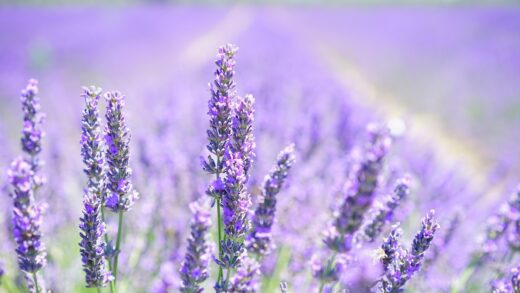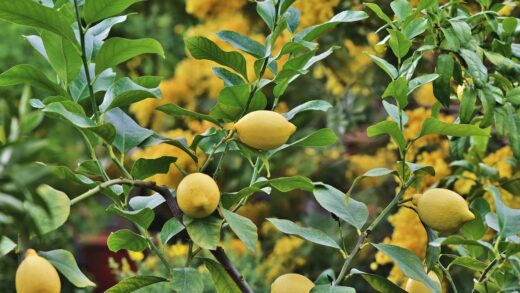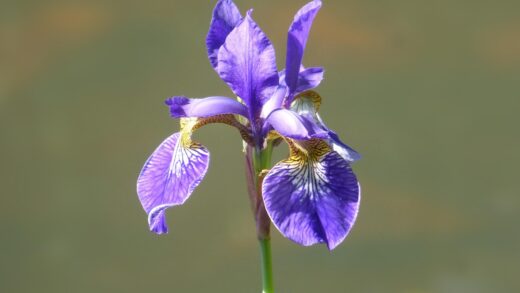Understanding and meeting the water requirements of peppermint is fundamental to cultivating a lush, healthy, and aromatic herb patch. Unlike many other hardy herbs that thrive in dry conditions, peppermint has its origins in moist, streamside environments, and it has retained a distinct preference for consistently damp soil. Proper irrigation is not just about survival; it directly influences the quality of the leaves, the concentration of essential oils, and the overall vigor of the plant. Failing to provide adequate moisture can lead to stunted growth and stressed plants, while overwatering can cause devastating root diseases.
Peppermint’s need for water is one of its most defining characteristics in the garden. Its root system thrives when the surrounding soil is kept evenly moist, similar to the consistency of a well-wrung sponge. This does not mean the soil should be swampy or waterlogged, as poor drainage and standing water are detrimental, leading to root rot and other fungal issues. The goal is to strike a balance, providing a steady supply of moisture that supports the plant’s rapid growth and the production of its desirable, oil-rich foliage. This is particularly important during the hottest months of the growing season when evapotranspiration rates are at their highest.
The frequency and volume of watering will depend on several key factors, including your climate, soil type, and whether the peppermint is grown in a container or in the ground. Plants in sandy soils will require more frequent watering than those in heavier clay or loam soils, as sandy soil drains more quickly. Similarly, peppermint grown in pots and containers dries out much faster than garden-grown plants and may need daily watering during hot, dry weather. Observing the plant and the soil is the best way to determine its needs; a simple touch test of the top inch of soil can tell you if it’s time to water again.
Establishing a consistent watering routine is far more beneficial than sporadic, infrequent soakings. Deep watering encourages the roots to grow deeper into the soil, making the plant more resilient during brief dry spells. When you do water, aim to apply it directly to the base of the plant, avoiding the foliage as much as possible. Wet leaves, especially overnight, can create an ideal environment for fungal diseases like rust and powdery mildew to develop. A soaker hose or drip irrigation system is an excellent way to deliver water efficiently to the root zone while keeping the leaves dry.
Understanding peppermint’s thirst
To truly grasp why peppermint requires so much water, one must look to its genetic heritage. As a hybrid of Mentha aquatica (watermint) and Mentha spicata (spearmint), it carries the traits of its water-loving parent. Watermint, as its name suggests, is a plant that naturally grows in very wet places, such as along the banks of rivers, streams, and ponds. This ancestry has endowed peppermint with a physiological need for a consistently high level of soil moisture to support its cellular functions and lush, rapid growth. Its broad leaves also have a high rate of transpiration, releasing water vapor into the air, which further contributes to its demand for a steady supply from the roots.
More articles on this topic
The practical implication for gardeners is that peppermint cannot be treated like Mediterranean herbs such as rosemary, thyme, or lavender, which are adapted to arid conditions. Allowing peppermint’s soil to dry out completely between waterings will cause significant stress to the plant. The initial signs of this stress include wilting leaves, a loss of vibrancy in their green color, and drooping stems. If the dry conditions persist, the edges of the leaves may begin to turn brown and crispy, and overall growth will be severely stunted. This stress also negatively impacts the production of essential oils, leading to less flavorful and aromatic leaves.
The plant’s water needs are most critical during its active growing season, which spans from spring through late summer. During this period, the plant is investing a significant amount of energy into producing new stems and leaves. A constant supply of water is essential to transport nutrients from the soil to these growing parts of the plant. When water is scarce, this nutrient transport system is compromised, hindering the plant’s development. Therefore, a gardener’s irrigation strategy must be most attentive during these peak growth months.
It is also important to recognize that a well-watered peppermint plant is a more resilient one. Proper hydration helps the plant maintain its turgor pressure, keeping its cell walls firm and its stems upright. This physical strength makes it less susceptible to physical damage and can even help it resist certain pests and diseases. In essence, meeting peppermint’s high water demand is not just about preventing wilting; it is a cornerstone of its overall health, vitality, and the quality of the harvest it provides.
Watering techniques for container-grown mint
Growing peppermint in containers is an excellent way to control its invasive spread, but this method comes with its own specific watering considerations. Pots and containers have a limited volume of soil, which means they can dry out much more quickly than a garden bed, especially on hot, windy, or sunny days. Terracotta or clay pots are particularly porous and lose moisture faster than plastic or glazed ceramic ones. Consequently, you must be prepared to water your container-grown peppermint far more frequently, often on a daily basis during the peak of summer.
More articles on this topic
The best way to determine if your potted mint needs water is to check the soil with your finger. Insert your finger about an inch deep into the potting mix; if it feels dry at that depth, it is time to water. Do not rely on a fixed schedule, as a plant’s water needs can change daily based on the weather. When you do water, do so thoroughly until you see excess water draining from the bottom of the pot. This ensures that the entire root ball has been saturated and also helps to flush out any accumulated salts from fertilizers that can build up in the soil over time.
Overwatering can be just as harmful as underwatering, even for a moisture-loving plant like peppermint. A container that is constantly waterlogged will suffocate the roots, depriving them of oxygen and creating an anaerobic environment perfect for root rot. To prevent this, it is absolutely essential that your container has adequate drainage holes at the bottom. Never let the pot sit in a saucer full of water for an extended period. After watering thoroughly, allow the pot to drain completely, and discard any excess water that collects in the saucer after about 30 minutes.
During the cooler months of spring and autumn, or during periods of cloudy weather, the plant’s water requirements will decrease. You will need to adjust your watering frequency accordingly, checking the soil moisture before each application. As winter approaches and the plant enters dormancy, you should reduce watering significantly, providing just enough moisture to keep the soil from drying out completely. This careful management of water throughout the year is key to keeping your container-grown peppermint healthy and productive.
Irrigation strategies for garden beds
When peppermint is planted in a garden bed, the irrigation strategy shifts from frequent watering of a small soil volume to deeper, more thorough soakings of a larger area. The goal is to encourage the root system to grow deeper into the soil profile, which makes the plant more drought-tolerant and resilient. Shallow, frequent watering only moistens the top layer of soil, encouraging a shallow root system that is more vulnerable to drying out quickly. Therefore, a deep watering approach, where the water is allowed to penetrate at least six to eight inches into the soil, is much more effective for in-ground plantings.
The frequency of deep watering will depend on your soil type and local climate. In loamy soil that retains moisture well, a thorough soaking once or twice a week during the growing season may be sufficient. In contrast, sandy soils that drain rapidly may require more frequent applications. A good rule of thumb is to provide about one to two inches of water per week, including rainfall. You can measure this using a rain gauge or by placing an empty can in the garden while you are irrigating to see how long it takes to collect an inch of water.
The method of water delivery is also an important consideration for preventing disease. Overhead watering with a sprinkler can be convenient, but it wets the foliage, which can promote the development of fungal diseases like mint rust and powdery mildew, especially if the leaves remain wet overnight. A much better approach is to deliver water directly to the soil level. Soaker hoses or a drip irrigation system are ideal for this purpose. These systems apply water slowly and directly to the root zone, minimizing evaporation and ensuring the water goes exactly where it is needed while keeping the leaves dry.
Mulching is a highly beneficial practice that complements any irrigation strategy for garden-grown peppermint. Applying a two- to three-inch layer of organic mulch, such as straw, shredded bark, or compost, around the base of the plants offers multiple advantages. Mulch helps to conserve soil moisture by reducing evaporation, it suppresses weed growth that would otherwise compete for water, and as it breaks down, it enriches the soil. This simple step can significantly reduce the frequency with which you need to water and contributes to the overall health of your mint patch.
Signs of overwatering and underwatering
Being able to recognize the signs of both too much and too little water is a crucial skill for any gardener cultivating peppermint. Although the initial symptoms can sometimes appear similar, a closer inspection can reveal the underlying cause. The most common sign of an underwatered plant is wilting. The leaves and stems will droop and appear limp, especially during the hottest part of the day. The soil will be visibly dry and may even pull away from the sides of the pot. The leaves of a thirsty plant might also lose their vibrant color, and the lower leaves may start to turn yellow and drop off as the plant conserves resources.
If the underwatering condition persists, the symptoms will become more severe. The edges of the leaves will begin to turn brown, dry, and crispy to the touch. The overall growth of the plant will be stunted, and it will produce fewer new leaves. An underwatered peppermint plant is also under stress, which makes it more susceptible to infestations from pests like spider mites, which thrive in dry conditions. The good news is that if caught early, a plant suffering from lack of water will typically revive quickly and dramatically after a thorough watering.
Conversely, overwatering can be more insidious and damaging in the long term. A classic sign of an overwatered peppermint plant is the yellowing of leaves, particularly the lower ones, which will then fall off. This can be confusing as it is also a symptom of underwatering, but in the case of overwatering, the soil will be consistently wet or soggy. The plant may also appear wilted, but not because of a lack of water; rather, the roots are suffocating and beginning to rot, rendering them unable to absorb water and nutrients to support the plant. This is a critical distinction to make.
An overwatered plant may also exhibit stunted growth and a generally unhealthy appearance. If you suspect overwatering, you may notice a musty or foul smell coming from the soil, which is an indication of root rot. In a container, you can gently slide the plant out to inspect the roots. Healthy roots should be white and firm, while rotting roots will be brown or black, soft, and mushy. To remedy overwatering, you must allow the soil to dry out significantly and adjust your watering schedule to be less frequent, ensuring proper drainage is in place.




















